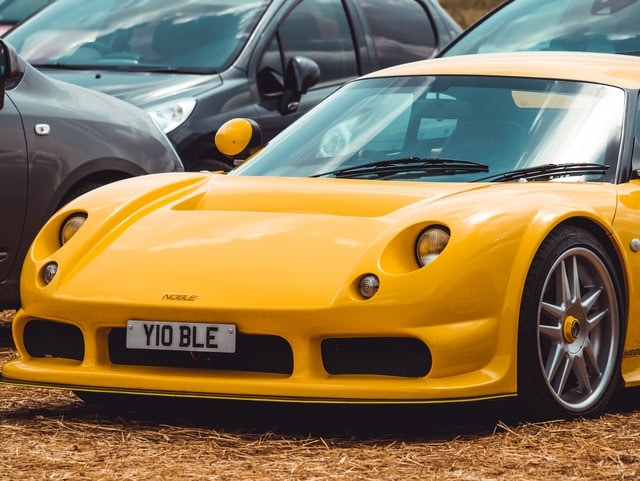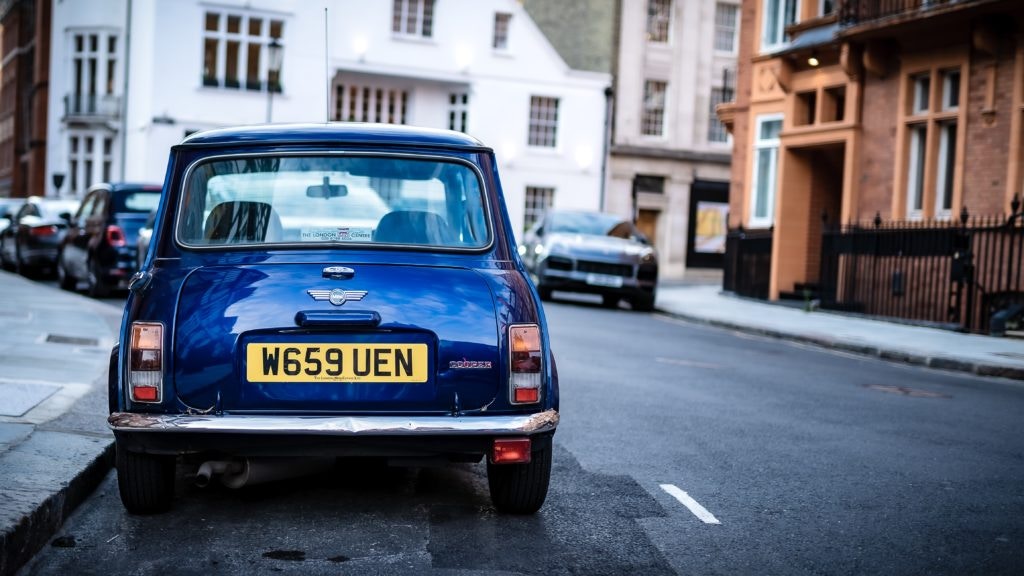Selling my car with a private plate – the ultimate guide

Looking to sell your car? If you’re a fan of personalisation and have contributed to the £2 billion industry of private licence plates, then it’s understandable that you won’t want to part with your unique plates along with your vehicle. Or perhaps you’re looking to see if dealers will be happy to buy your car even with personal car registrations. Either way, here’s our guide on selling a car with private plates.
- How to retain my private plate
- Removing private plate from my car
- How to store your plates
- Putting original plates back on my car
- Selling a car with a private plate
- Who do I need to inform when I change my number plate?
- Frequently asked questions

How to retain my private plate
Considering the cost of a private plate can be as high as half a million pounds, it’s no surprise plenty of owners want to keep them for their next car. In order to do this, you’ll have to make sure the car it is currently attached to is fully up-to-date so far as the DVLA is concerned, as well as in working order. That includes:
- Being fully registered with a V5C
- Being up-to-date on road tax, or having a SORN in place
- Being able to be inspected if needed
- Is able to move under its own power
- Is eligible for an MOT
If your car has had a SORN for more than five years, it will need to be taxed. Providing all the above is in place, you can apply for a plate transfer online or by post. If successful, you’ll be sent a V778, aka. A retention document outlining your ownership of the plate independent of a vehicle. Alternatively, you can move your plates directly to another car, in which case you will need to complete a V317 form. Do not sell or scrap your car before you have this document in hand or you’ll have lost your right to claim this registration number.
Take note: You cannot keep a plate if it starts with Q or NIQ. Classic cars that do not usually need an MOT will also need to acquire one if you want to keep the plates.
Once you applied to have your plate on retention, paid the fee (£80 as of 2022), and finalised the process, your private plates will no longer be associated with the car. You won’t be able to drive it unless you have attached new plates and have the accompanying V5C to confirm this (the DVLA will send this to you).

Removing private plate from my car
Now you know how to handle the admin for keeping a private number place, next is their physical removal. Generally speaking, your plates will be attached by one of the following methods:
Screws
Screws will usually be covered with plastic caps which you should be able to pop off with ease. This will reveal the screws below which can be undone with a suitable screwdriver. Make sure to keep hold of the plate as you undo each screw as you don’t want to drop your plates and damage them, or drag the screw out under the plate’s weight and damage the threading.
Pop Rivets
Pop rivets can be more challenging to remove as they are secured with specialised tools and attachments. Trying to remove these can be tricky if you are trying to not damage the plates themselves. So, it might be worth taking your car into the nearest garage and asking a pro.
Tape
Depending on the strength of the tape used, a firm yank might be enough to remove your plates. Make sure you are holding the plate firmly on both sides so you don’t accidentally snap it. If the adhesive is stronger, you can use a fishing line or tooth floss and a sawing action to ‘cut’ through the glue. You might also want to use a hairdryer (careful not to use too high a heat) to loosen up the glue.
Sticky Pads
Sticky pads can be removed much like tape or glue, with a little heat or the help of string to help break contact between the plates and your car.
How to store your plates
Plates are pretty durable, after all, they withstand driving in all terrains and all weather, but be sensible about their storage. Consider wrapping them, even in newspaper, to prevent them rubbing against each other and causing scratches. Having them separate from your car is also a great opportunity to give them a proper clean. You might also want to give them a good scrub to remove glue residue so they are ready to be placed on your next vehicle.
Putting original plates back on my car
Of course, now you’ve taken your personalised plates off your car, changing back to the car’s original ones comes next. In terms of admin, you should be able to complete the process when you apply for your V778 to take your personalised plates off. Putting them back onto your car can be trickier than taking them off, especially in the case of pop rivets or finding a strong enough adhesive (that doesn’t make them impossible to remove for future owners). So, unless you can easily screw them back on, the best bet may be to ask a professional.

Selling a car with private plates
If you choose to sell your car as-is, plates and all, it’s still possible. Generally, this will be the same as with any car sale, you simply move ownership to the buyer by updating the V5C. This can be beneficial if you no longer want your plates, as it saves you the time, admin, and cost of a V778. Having a private plate won’t stop you from being able to sell or scrap your car, and most dealers shouldn’t turn their nose up at the plate as they’re more interested in the car it’s attached to. Private buyers may be a little fussier, although you may also find the perfect match for your personalised plates (like a new owner with a shared name) and that could even help you achieve a better asking price. Essentially, having a private plate shouldn’t massively impact buying or selling your car.
Who do I need to inform when I change my number plate?
If you have changed your car registration number, be sure to update:
- Your insurance company
- Your auto-pay accounts such as:
- Congestion charge payments
- LEZ payments
- ULEZ payments
- Dart charge payments
- Clean Air Zone payments
Frequently asked questions about selling a car with a private plate
Can I sell my car while waiting for the number plate transfer?
No. If you sell your car with the plates attached you transfer ownership of both the car and the plates. For this reason, do not sell or scrap your car until you have your V778 declaring the plates have been successfully removed from the vehicle and are on retention.
How much does it cost to retain a private plate?
The cost to apply for a retention certificate (V778) is £80.
How long does it take to take a private plate off a car?
In theory, it can take mere minutes to complete the process of moving your private plates and therefore severing the connection they have to your current car. In practice, you won’t be able to prove ownership of the plates (or sell the car they are currently on without losing your right to them) before you receive your new V5C and V778. These can take up to six weeks to arrive in the post.

Does changing your number plate affect insurance?
No, changing plates should not have any impact on your insurance premiums and does not count as vehicle modification.
Do I have to retain my old number plate?
It’s not the end of the world if you don’t keep your old plates when you attach your personalised ones. But it may lead to a lot more admin and a few more costs when it comes time to remove your unique plates. A car needs a registration plate in order to be registered and roadworthy, if you have lost the old ones, you’ll need to apply for new ones.
After taking my private plate off my car does it have to be attached to a new vehicle?
No, provided you have applied for a V778, you own the plates. That means they don’t have to be registered to a vehicle for your ownership to still be valid. You absolutely need to contact DVLA when they are placed on a new vehicle, though. And it goes without saying, you can’t drive your car once you have removed the plates.
What is a V317?
A V317 form is needed if you want to transfer your personal plates onto a different car. This will allow your plates to go right from your old car to your new car, without the need for a V778 retention certificate.

Ready to sell?
Need to sell your car, or want to understand more about documentation or maintenance? Check out more of our guides here, covering everything from the paperwork you need when buying and selling, to various notices you may need to file with the UK’s driver and vehicle licensing agency.